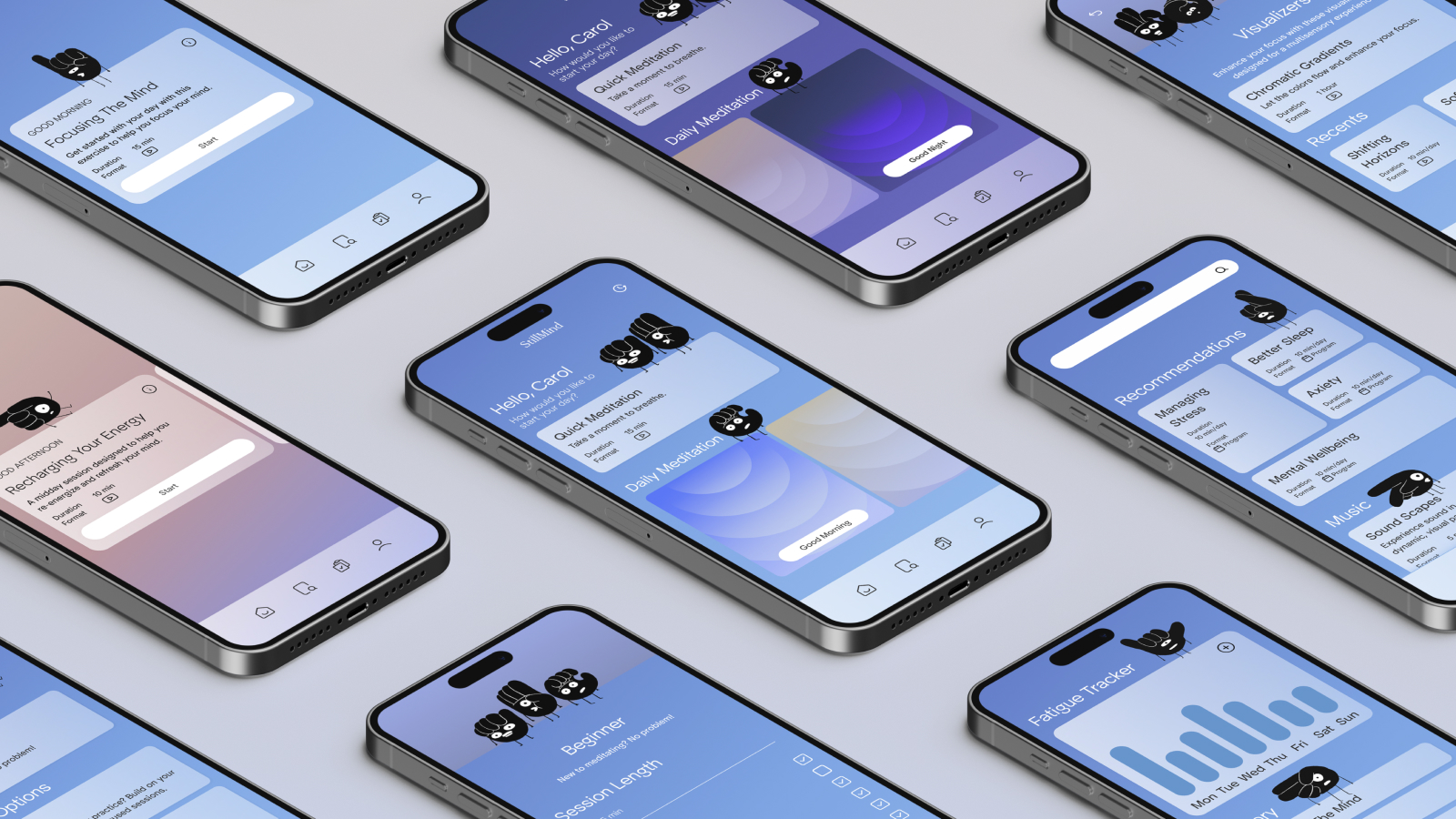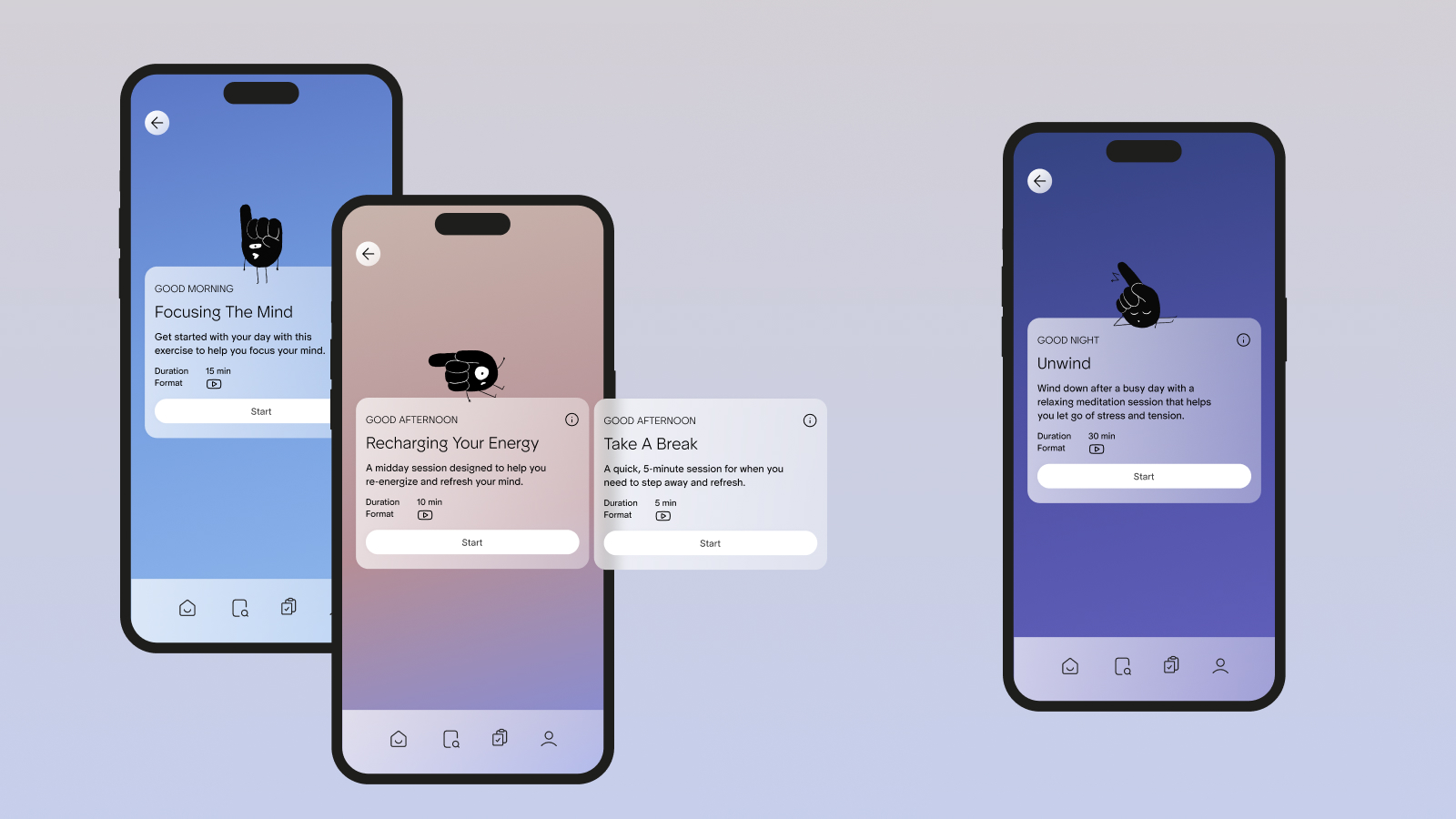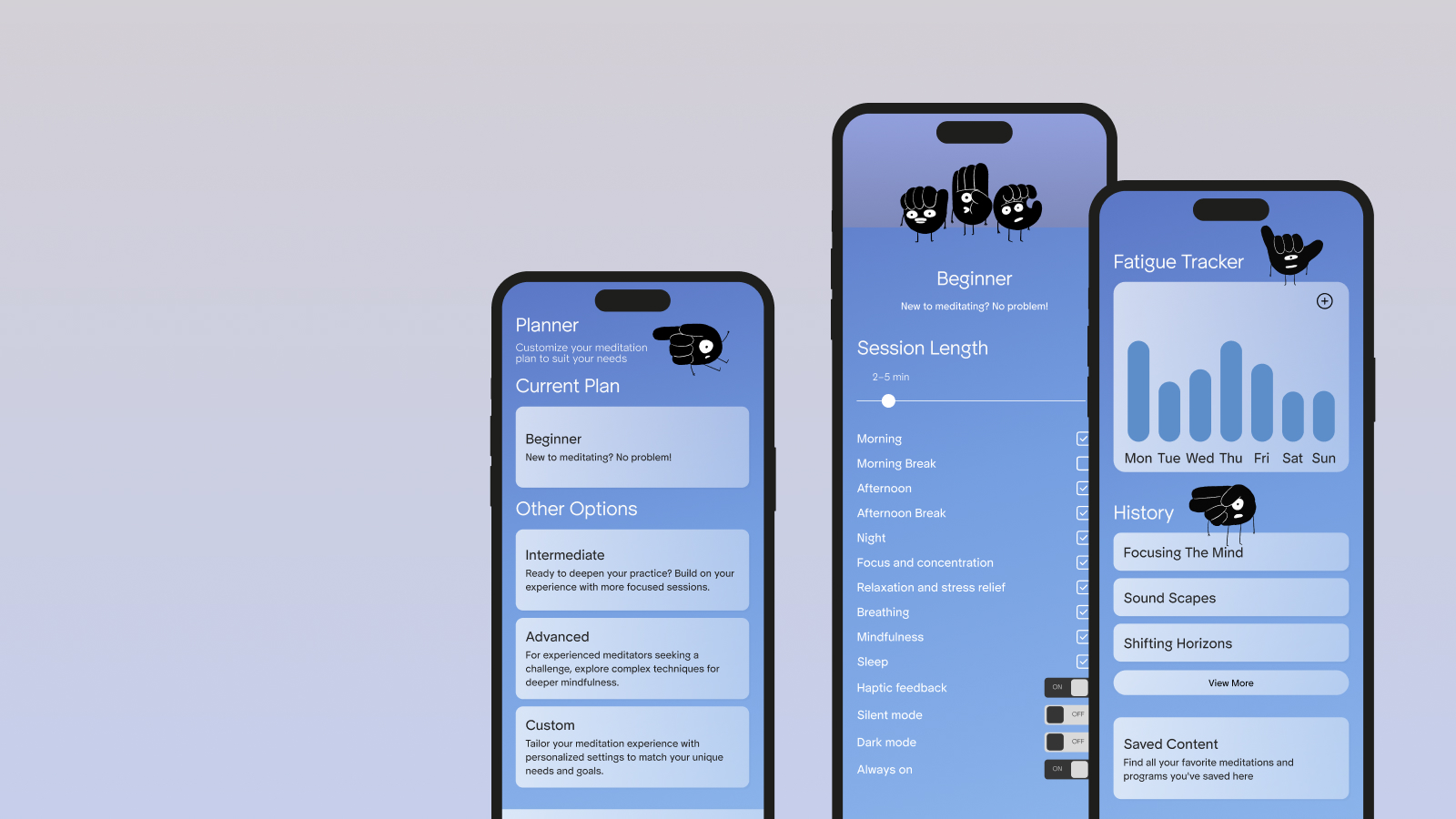StillMind
Meditation app for d/Deaf and hard-of-hearing (DHH) individuals experiencing listening-related fatigue.
Project Overview
The goal of this project was to create a fully accessible meditation app for d/Deaf and hard-of-hearing (DHH) individuals. Unlike traditional meditation apps that rely on spoken guidance, this one offers visual, haptic, and customizable audio options—making meditation more inclusive and relaxing without depending on sound.
Problem Statement
Listening-related fatigue is a significant challenge faced by
d/Deaf and hard-of-hearing (DHH) individuals who rely on auditory
and visual communication in various environments. It occurs due to
the cognitive load required to process speech, and is especially
prominent in acoustically difficult environments such as
classrooms, workplaces, and social settings.
Existing assistive
technologies, such as cochlear implants and hearing aids, help
with auditory processing but do not alleviate the cognitive strain
associated with continuous listening effort, calling for a need
for a solution that focuses on reducing mental exhaustion and
improving the overall quality of life for DHH individuals.



A procedural audio visualizer allows users to visually experience sound, transforming music into dynamic, flowing patterns that move in sync with the audio. This creates a completely new way to engage with sound, offering a multisensory experience that adds depth and interaction to the user experience.
Closing Thoughts
In closing, I want speak towards approaching this project as a
hearing individual. Unfortunately, I wasn’t able to test the app
with anyone in the d/Deaf community, which would have been crucial
to ensuring that the app truly meets their needs. Proceeding
further, I would hope to seek collaboration and feedback from the
community to ensure the app is accessible and meaningful to its
intended audience.
As part of my research, I explored Jessica A. Holmes’ studies and
wanted to share her perspective on navigating research as an
outsider. Holmes, a hearing, able-bodied musicologist, acknowledges
the challenges of studying Deaf culture. She does not position
herself as an “ally” but instead as someone who seeks to learn and
understand. Her approach emphasizes the importance of engaging
deeply with Deaf Studies literature, prioritizing listening and
learning over imposing external views, and recognizing the
historical stigmatization of deafness. Holmes stresses the need to
challenge misconceptions rather than reinforce them.
Inspired by her approach, I would aim to continue learning from the
d/Deaf community, actively sharing my work for feedback, and
fostering collaboration based on trust and mutual respect, ensuring
my work remains authentic, accurate, and truly supportive of the
people I aim to serve.
